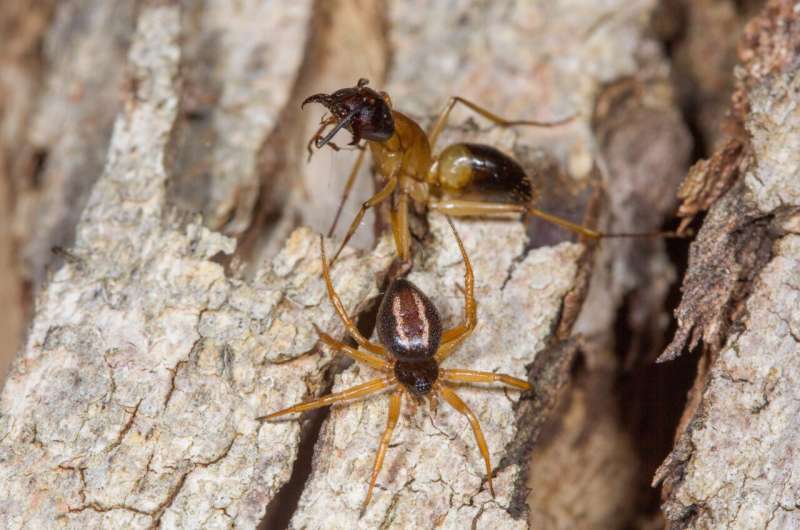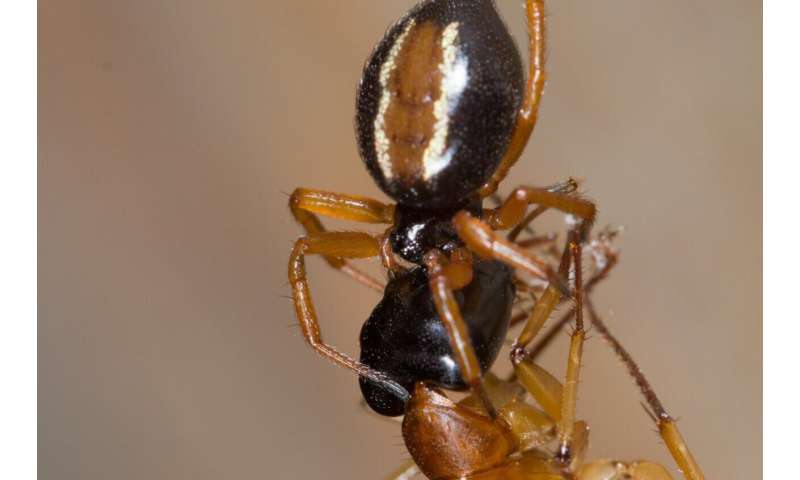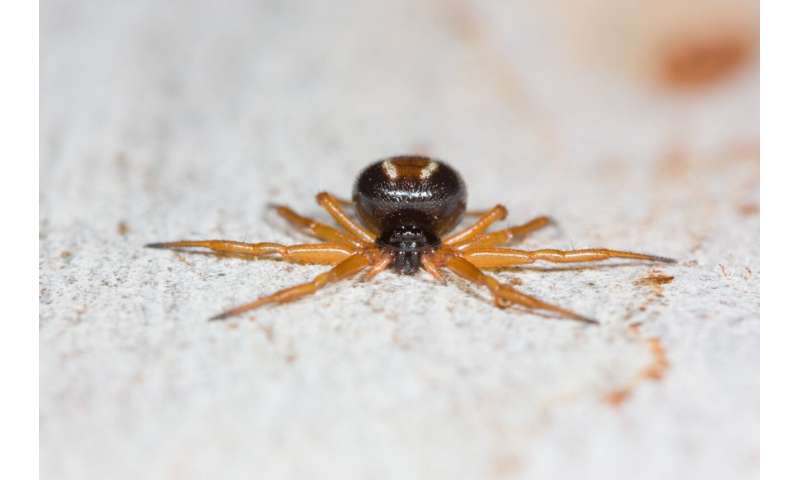September 20, 2022 report
How the Australian ant-slayer spider captures ants

A team of researchers at Macquarie University, in Australia, working with two colleagues from Universität Hamburg, in Germany, has uncovered the means by which the Australian ant-slayer spider is able to capture and eat the much larger banded sugar ant. Their study is published in the Proceedings of the National Academy of Sciences.
Scientists have known for a long time that Australian ant-slayer spiders survive by capturing and eating banded sugar ants. Both creatures live on or around Eucalyptus trees. The spiders hide in the bark of the tree during the day and then come out at night to prey on the ants. The ants climb the trees at night to forage. But until now it was not known how the tiny spiders are able to capture prey that is roughly twice their size. To find out, the researchers filmed the action using high-speed cameras and then watched in slow motion.
It turns out the spider uses some pretty fancy moves to disable the ant. The researchers found that a hunting event started with a single spider tying itself to the tree trunk and then waiting for an ant to appear. When it did, the spider leapt into the air, and using its back legs, attached a single line of silk to the ant. The spider did not stop, however—in one continuous movement, it soared past the ant in a somersault and then dangled beneath the ant, out of reach.
Next, the spider began circling the ant, unwinding thread as it went, encircling its prey. Eventually, the ant was encased, unable to defend itself, or even move. At that point, the spider climbed onto the ant and injected it with venom. Once the ant died, it was cut loose and moved to another location where it was safer for the spider to eat it. The researchers noted that another key to the success of the attack was the speed at which the spider moved—so quickly that the ant did not have time to react.
-

E. umbilicata feeds on an ant while hanging on a single strand of silk. Credit: Alfonso Alceves. -

Flushed hunting position of E. umbilicata on the surface of a Eucalyptus tree. Credit: Alfonso Alceves.
Across 60 attacks on film, the researchers found the spider's technique to be quite lethal—as a group, they were approximately 87% successful in their attempts to capture an ant. And they would have to be, because prior research has shown that the ants account for approximately 90% of the spiders' diet. The researchers conclude that the attack strategy used by the Australian ant-slayer is the only known instance of it in the spider world.
More information: Alfonso Aceves-Aparicio et al, Fast acrobatic maneuvers enable arboreal spiders to hunt dangerous prey, Proceedings of the National Academy of Sciences (2022). DOI: 10.1073/pnas.2205942119
Journal information: Proceedings of the National Academy of Sciences
© 2022 Science X Network

















